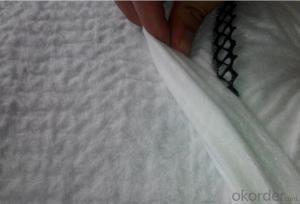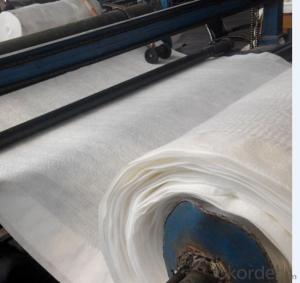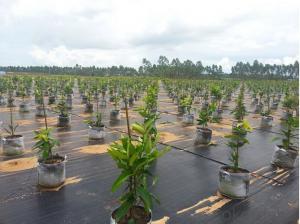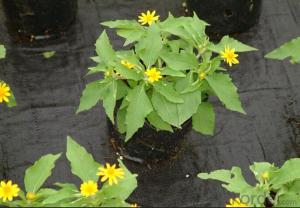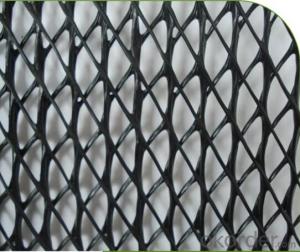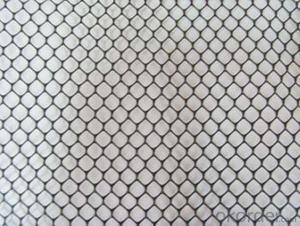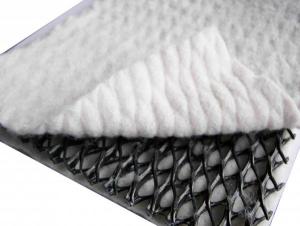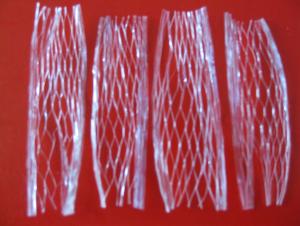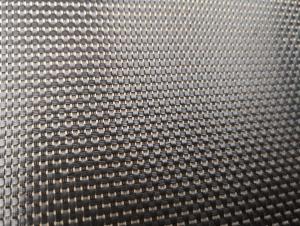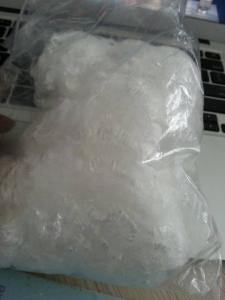HDPE Drainage Geocomposite with More Than 10Years
- Loading Port:
- Qingdao
- Payment Terms:
- TT OR LC
- Min Order Qty:
- 2000 m²
- Supply Capability:
- 200000 m²/month
OKorder Service Pledge
OKorder Financial Service
You Might Also Like
HDPE Drainage Geocomposite
Introduction for HDPE Drainage Geocomposite
Three-dimensional composite drainage network is one three-dimension geonet composited two needle-punched non-woven geotextiles. Offering completely functions “filter-drainage-protection”. This kind of special three-dimensional structure can make it bear higher compression loading and keep certain thickness and same time offer excellent permeable performance.
Features for HDPE Drainage Geocomposite
1. Excellent drainage and sustain high compression loading
2. Highest tensile strength and shearing strength
3. Cut down ratio of geotextile into geonet and keep stable permeability in a long time
4. It can bear compression loading over 2000Kpa
5.Its compressive strength far exceeds general drainage geonet
Application for HDPE Drainage Geocomposite
Using for drainage such as refuse landfill, roadbed & road surface, railway, tunnel, underground structure, retaining wall, garden, sports ground and so on.
Technical Data for HDPE Drainage Geocomposite
Drainage network core | units | Specification | ||||
Unit weight | g/m2 | 750 | 1000 | 1300 | 1600 | |
Thickness | Mm | 5.0 | 6.0 | 7.0 | 7.6 | |
Hydraulic conductivity | m/s | kx10-4 | Kx10-4 | Kx10-4 | Kx10-4 | |
Elongation | % | 50 | 50 | 50 | 50 | |
Tensile strength (core netwaork) | kN/m | 8 | 10 | 12 | 14 | |
Geotextile | g/m2 | Heavier grades of geotextiles can be bonded to geonet on request | ||||
FAQ
1.How about the delivery time?
Lead time since receipt of 30% T/T deposit payment: 2-3 weeks. (Samples will be prepared within 3 days.)
2. What kind of payments does jenor support?
T/T, L/C, Cash are accepted.
3. What's are the MOQ?
We can according to your condition to set the MOQ. and we can provide you samples for quality inspection before the mass production.
4. Do you charge for the samples?
Accordeing to our company policy, the samples are free, we only charge the freight fee.
5. Can you produce according to customers' design?
Sure, we are professional manufacturer, OEM and ODM are both welcome.
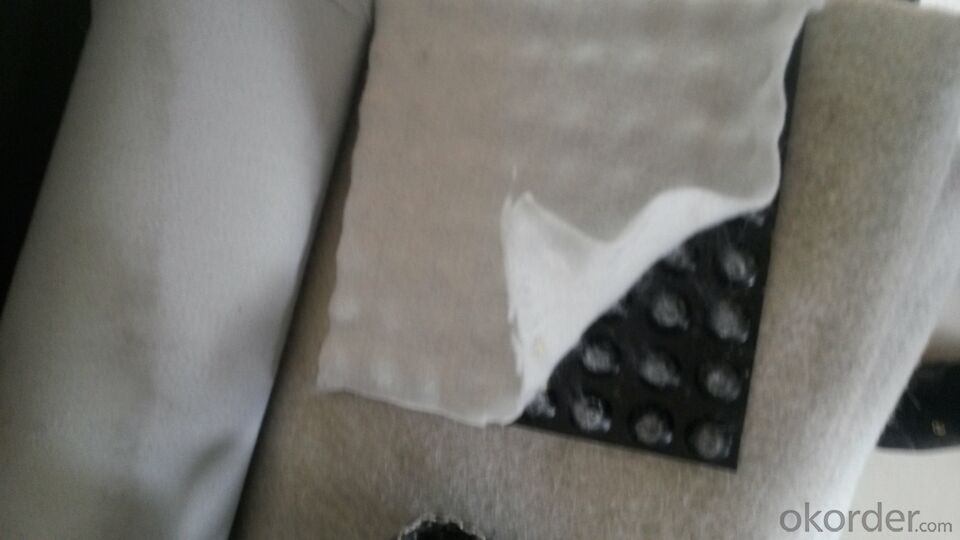
- Q:What are the different surface textures available in earthwork products?
- Some of the different surface textures available in earthwork products include smooth, rough, textured, and patterned. These textures can be achieved through various techniques such as grinding, brushing, or stamping, and they can add visual interest and enhance the overall aesthetic of the product.
- Q:What are the different edge profiles available in earthwork products?
- Some different edge profiles available in earthwork products include straight edges, beveled edges, rounded edges, and chamfered edges.
- Q:How do geotextiles aid in soil separation in earthwork applications?
- Geotextiles aid in soil separation in earthwork applications by acting as a barrier between different soil layers, preventing their intermixing. They create a stable and well-defined separation, allowing for proper drainage, filtration, and reinforcement of the soil layers. This helps in maintaining the structural integrity of the project, preventing soil erosion, and improving overall performance and longevity of the earthwork.
- Q:How are geosynthetic materials used in coastal protection structures?
- Geosynthetic materials are used in coastal protection structures to reinforce and stabilize the soil, prevent erosion, and enhance the overall resilience of the coastline. They are commonly used in the construction of revetments, breakwaters, and seawalls to provide an additional layer of defense against wave action and tidal forces. These materials, such as geotextiles and geogrids, act as barriers that distribute the load and reinforce the soil, reducing the risk of erosion and minimizing the impact of coastal erosion on the surrounding environment.
- Q:What are the benefits of using geotextile tubes in coastal erosion prevention?
- Geotextile tubes offer several benefits in coastal erosion prevention. Firstly, they provide a cost-effective solution compared to traditional methods like rock or concrete structures. Secondly, these tubes are flexible and can adapt to changing coastal conditions, including wave action and tidal fluctuations. Additionally, geotextile tubes are environmentally friendly as they allow for natural sedimentation and vegetation growth, enhancing habitat restoration. Furthermore, they are easy to install and remove, making them a versatile and temporary erosion control measure. Overall, geotextile tubes offer a sustainable and efficient approach to mitigating coastal erosion.
- Q:How do geogrids improve the load-bearing capacity of retaining walls?
- Geogrids improve the load-bearing capacity of retaining walls by providing additional reinforcement and stability to the soil. They are installed within the layers of soil behind the wall, creating a strong and interconnected system that distributes the load more effectively. This prevents excessive movement and deformation of the soil, enhancing the overall strength and stability of the wall.
- Q:Can earthwork products be used for constructing boat ramps?
- Yes, earthwork products such as soil, gravel, or fill materials can be used for constructing boat ramps. These materials are often used to create a stable and solid foundation for the ramp, ensuring it can withstand the weight and movement of boats. Additionally, earthwork products can be shaped and graded to create a suitable slope and level surface for easy boat launching and retrieval.
- Q:How do erosion control blankets help in preventing soil erosion?
- Erosion control blankets help in preventing soil erosion by providing a protective layer over the soil surface. These blankets are made of biodegradable materials like straw, coconut fiber, or jute, which help to stabilize the soil and hold it in place. They prevent the impact of raindrops on the soil surface, reduce water runoff, and promote water infiltration into the soil. Additionally, erosion control blankets also help to retain moisture, regulate soil temperature, and promote the growth of vegetation, which further enhances the stability of the soil and prevents erosion.
- Q:How is it related to civil engineering?
- From the narrow sense of the definition, civil engineering is equivalent to civil engineering, that is, construction (or structural engineering) this small range.
- Q:Are there any specific earthwork products available for sports field construction?
- Yes, there are specific earthwork products available for sports field construction. These may include materials like topsoil, sand, gravel, and drainage systems that are designed to meet the specific needs of sports fields, ensuring proper drainage, stability, and optimal playing conditions.
1. Manufacturer Overview |
|
|---|---|
| Location | |
| Year Established | |
| Annual Output Value | |
| Main Markets | |
| Company Certifications | |
2. Manufacturer Certificates |
|
|---|---|
| a) Certification Name | |
| Range | |
| Reference | |
| Validity Period | |
3. Manufacturer Capability |
|
|---|---|
| a)Trade Capacity | |
| Nearest Port | |
| Export Percentage | |
| No.of Employees in Trade Department | |
| Language Spoken: | |
| b)Factory Information | |
| Factory Size: | |
| No. of Production Lines | |
| Contract Manufacturing | |
| Product Price Range | |
Send your message to us
HDPE Drainage Geocomposite with More Than 10Years
- Loading Port:
- Qingdao
- Payment Terms:
- TT OR LC
- Min Order Qty:
- 2000 m²
- Supply Capability:
- 200000 m²/month
OKorder Service Pledge
OKorder Financial Service
Similar products
New products
Hot products
Hot Searches
Related keywords


